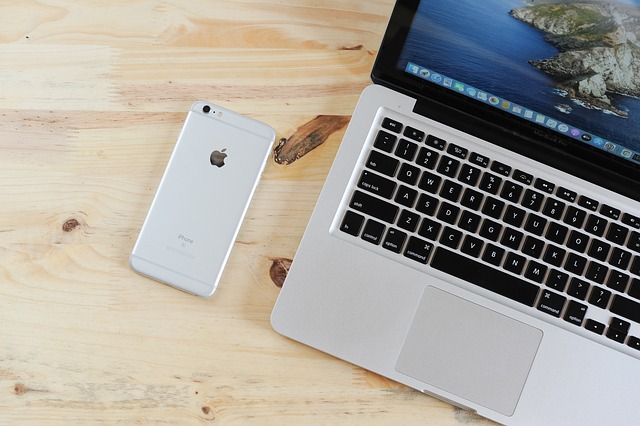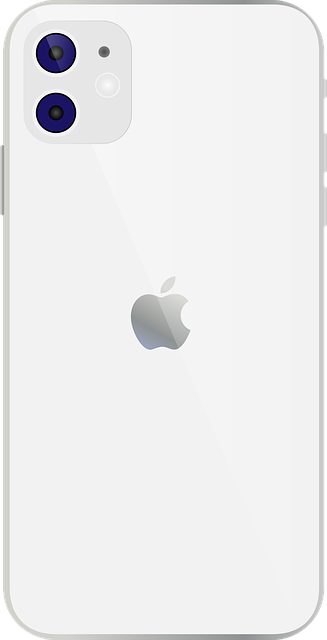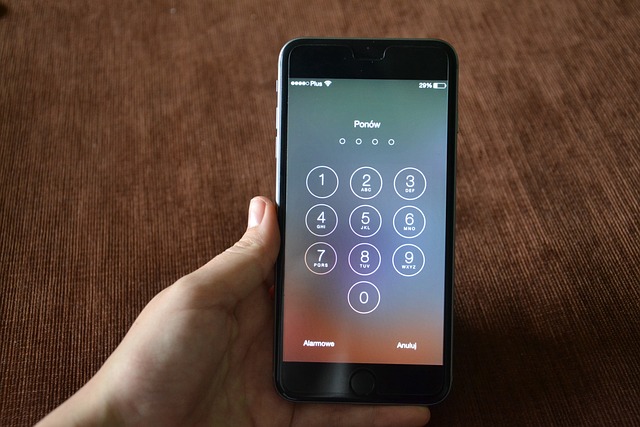To replace an iPhone battery, you should first identify your model as the process varies across different generations, from the iPhone XR to the latest iPhone 13. The guide provides detailed instructions and safety precautions for DIY enthusiasts, with Apple offering authorized service using trained professionals and genuine parts for those preferring professional assistance. It's important to note that newer iPhones generally have more accessible batteries, environmental factors like a swollen battery may require additional checks, and certain models have additional features like a Taptic Engine that complicate the repair. Apple provides battery replacement services at their stores and authorized providers, with potentially faster turnaround times for in-warranty or AppleCare+ devices. The iOS battery health tool helps users decide when a replacement is necessary. You can opt for in-store service for a quick fix or mail-in repair for convenience, but remember to back up your data beforehand. When choosing a repair service, consider the provider's reputation, part authenticity, and turnaround time to ensure quality and reliability. Opting for authorized Apple services or trustworthy third-party providers that use genuine parts will guarantee the best performance and longevity from your iPhone after battery replacement.
When an iPhone’s battery life starts to wane, users face a common dilemma: when and where to replace their device’s battery. This article delves into the nuances of iPhone battery replacement service times across various scenarios, providing consumers with a clear understanding of the factors that influence these durations. From Apple’s official stance to the impact of location and the choice between in-store and mail-in services, we dissect the process to replace an iPhone battery and offer practical tips for minimizing downtime. We also compare third-party alternatives and analyze future trends, ensuring you are well-equipped to make informed decisions about your iPhone’s battery health. Whether you’re considering a DIY repair or opting for professional assistance, this guide is designed to navigate the intricacies of replacing an iPhone battery efficiently.
- Understanding iPhone Battery Replacement: A Comprehensive Guide
- Factors Influencing iPhone Battery Replacement Service Time
- Apple's Official Stance on iPhone Battery Replacement Times
- Comparing In-Store vs. Mail-In iPhone Battery Replacement Services
- The Role of iPhone Model and Battery Type in Service Duration
- Assessing Third-Party iPhone Battery Replacement Services
Understanding iPhone Battery Replacement: A Comprehensive Guide

When the performance of your iPhone’s battery starts to wane, knowing how to replace an iPhone battery can be crucial for maintaining the device’s functionality and longevity. This guide will walk you through the intricacies of replacing an iPhone battery, offering insights into the types of batteries used in iPhones, the tools required for the task, and the safety precautions to take. It’s essential to identify the model of your iPhone as this determines the specific type of battery and replacement procedure. For instance, iPhones from the iPhone 6 generation to the iPhone X can have their batteries replaced using similar steps, but newer models like the iPhone 12 series or later introduce new challenges due to their advanced technology and design.
Apple offers an authorized service that includes replacing an iPhone battery. This service ensures that the replacement is performed by trained professionals with genuine Apple parts. If you prefer a do-it-yourself approach, you can find detailed instructions online, complete with diagrams and videos to guide you through each step. It’s advisable to use a reputable source for such guidance to avoid damaging your device. Additionally, if your iPhone’s battery health has significantly degraded, it may be covered under Apple’s battery replacement program, which offers a replacement at a reduced cost or even free of charge, depending on the model and circumstances. For those who value their time and prefer convenience, visiting an Apple Store or an authorized service provider is recommended. They can handle the replacement efficiently and often provide a same-day service for added convenience. Whether you choose to replace your iPhone battery yourself or opt for professional assistance, understanding the process can empower you to make informed decisions about maintaining your device’s performance.
Factors Influencing iPhone Battery Replacement Service Time

When considering an iPhone battery replacement, several factors influence the service time, which in turn affects how quickly you can resume using your device with optimal performance. The model of the iPhone is a primary determinant; newer models often have batteries that are easier and faster to replace due to design improvements and more user-accessible components. Additionally, the location where you opt for the replacement—whether it’s an Apple Store, authorized service provider, or independent repair shop—can vary the service time significantly. For instance, scheduling an appointment at an Apple Store might offer a quicker turnaround compared to mailing in your device or visiting a smaller local repair center. Environmental factors also play a role; if the battery is swollen due to excessive overcharging, it may require additional safety checks, extending the replacement time. The complexity of the iPhone model and whether any additional services are performed alongside the battery replacement, such as data backup or software reset, can also impact the overall service duration. It’s advisable to check with the service provider for an estimated time frame before initiating a battery replacement to ensure your expectations align with reality. Understanding these factors can help you make informed decisions and manage your time effectively when planning to replace an iPhone battery.
Apple's Official Stance on iPhone Battery Replacement Times

When considering an iPhone battery replacement, it’s pivotal to understand Apple’s official stance on the procedure. Apple advises that users should replace their iPhone batteries when they notice a significant decrease in performance or battery life. The company offers battery replacement services through its network of Apple Stores and authorized service providers. The turnaround time for such replacements can vary based on location, model of the iPhone, and whether the device is covered under warranty or AppleCare+. Typically, out-of-warranty replacements might take a few days, while in-warranty or AppleCare+ scenarios may offer expedited service. It’s also worth noting that Apple has implemented a battery health feature in iOS, which helps users make informed decisions about their device’s performance and when it’s time to replace the battery. This feature, along with Apple’s service policies, provides clarity and convenience for those looking to maintain or improve their iPhone’s longevity and efficiency through battery replacement.
Comparing In-Store vs. Mail-In iPhone Battery Replacement Services

When considering an iPhone battery replacement, consumers are often faced with two primary options: in-store service or mail-in repair. Both methods offer solutions to extend the life of your device, but they differ in terms of convenience and turnaround time. In-store services typically provide a quick fix; many Apple Store locations offer walk-in repairs where trained technicians replace iPhones batteries on the spot. This direct service ensures that your device is back in your hands within hours, allowing for minimal disruption to your daily routine. However, the immediate nature of in-store replacements may be accompanied by a wait, especially during peak times or if parts are not readily available.
In contrast, mail-in iPhone battery replacement services offer an alternative that can be more convenient, depending on individual circumstances. This option enables users to send their iPhones to authorized service centers without the need to visit a physical location. The turnaround time for mail-in services can vary, with factors such as shipping times and service center workload impacting completion dates. While some users might experience a longer waiting period compared to in-store visits, this method can be advantageous for those who prioritize convenience over speed or are unable to visit an Apple Store directly. Regardless of the chosen method, it’s advisable to back up your iPhone before service to prevent any potential data loss. Whether opting for immediate in-store service or the more flexible mail-in option, both paths aim to revitalize your iPhone’s performance with a new battery, ensuring your device operates at its optimal level.
The Role of iPhone Model and Battery Type in Service Duration

When considering the replacement of an iPhone battery, both the model of the device and the type of battery play significant roles in determining service duration. iPhones, ranging from the latest releases to older models, are designed with different specifications that influence repair times. For instance, an iPhone XR may require a different approach for battery removal and replacement compared to an iPhone 12. The process for these two models can vary due to design differences, such as the adhesive used in later models or the placement of components within the device. Moreover, the type of battery also affects service time; lithium-ion batteries, which are standard in iPhones, can degrade over time and may necessitate additional steps during replacement to ensure proper functioning and safety standards are met.
When opting to replace an iPhone battery at a professional service center or through Apple’s own repair services, it’s crucial to consider the model specifications. The complexity of disassembling the device, the availability of replacement parts, and the necessary tools and expertise required can all influence the duration of the service. For example, newer models like the iPhone 13 may have more sophisticated security measures, such as a Taptic Engine that must be carefully handled during repair, which could extend the time needed for a successful battery swap compared to an older model like the iPhone 8. Consumers seeking to replace their iphone battery should weigh these factors when selecting a service provider and anticipate varying service durations based on their device’s model and battery type.
Assessing Third-Party iPhone Battery Replacement Services

When considering an iPhone battery replacement, consumers often weigh the option between Apple’s official service and third-party providers. Assessing third-party services for iPhone battery replacement requires a careful examination of several factors. For starters, potential customers should investigate the reputation of these third-party service providers. Positive reviews and testimonials can be indicative of their reliability in delivering quality replacements that match the performance of an original Apple battery. Additionally, it’s crucial to verify if these services use genuine parts or equivalents; while cost-effective, non-genuine parts might compromise the device’s efficiency and longevity.
Another key aspect to consider when replace iPhone battery with third-party services is their turnaround time. Some offer same-day services, which can be particularly advantageous for those in need of immediate solutions. In contrast, others may take longer due to various reasons such as the complexity of the service or handling a high volume of requests. Regardless, the service center’s ability to provide a swift and efficient repair without compromising on quality is a testament to their expertise and commitment to customer satisfaction. It’s imperative to balance the urgency of your needs with the provider’s reputation and capacity to deliver consistent results. This due diligence ensures that when you replace iPhone battery, you are making an informed decision that aligns with your expectations and device requirements.
When considering the replacement of an iPhone battery, understanding the nuances of service time across various platforms is crucial. This article has provided a detailed examination of the factors influencing these times, from Apple’s official policy to the efficiency of third-party services. It’s clear that in-store and mail-in options each have their merits depending on the iPhone model and battery type in question. For those looking to replace their iphone battery, it’s essential to weigh the convenience against the turnaround time each service offers. Whether opting for Apple’s authorized service or a trusted third-party provider, informed decisions can lead to minimal disruption. This comparative analysis aims to equip readers with the knowledge necessary to make the best choice for their iPhone battery replacement needs.
